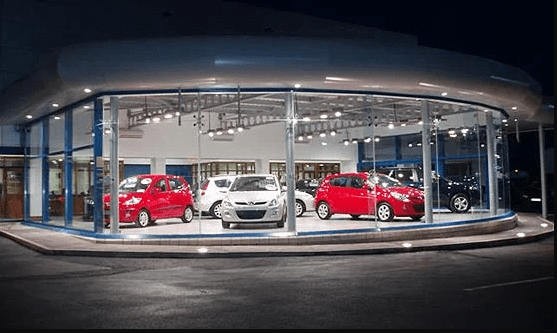The ultimate Guide To Car Loans And Vehicle Finance Deals
Wondering About Which Car Loan is Best? Here’s The Information You Need
GAUK Motors Publish Ground-Breaking Used Car Buyers Guide
Looking to finance that next vehicle with a car loan?
Cars are expensive purchases and when you’re looking at a gleaming new set of wheels, you can quite easily get emotionally involved in the purchase. This is why it’s so important to know what type of finance or car loan will best suit your needs prior to visiting the forecourts.
While purchasing a new set of wheels is exciting, getting approved for a car loan may be challenging for many, especially when applying for vehicle financing for the first time.
The fist BIG questions most people ask is: “How much can I borrow?”
When the question really should be: “What’s the least I can borrow to get the vehicle I want?”
In reality, the only winner in a car finance deal is the car loan company. Rates are often quite high and you’re borrowing against a depreciating asset!

Car Finance, The Pros and Cons of Financing your next car purchase
Choosing a method of car finance can be as confusing as choosing a car itself.
Just as there are many makes, models and specifications to pick between when opting for your vehicle of choice, there are many methods of car finance which each present their own strengths and weaknesses.
Why you should plan ahead and budget.
The most important factor when deciding on a method of car finance is to plan ahead. Make sure you research the topic (as you are doing here!) and think carefully about which car finance option suits your circumstances. Consider what you can comfortably afford each month, and how much you can afford to pay in the long term. Look at all options when choosing car finance – choose the option that is right for you.
Also try and save money wherever you can – shop around for the best deals, consider buying a new car online and familiarise yourself with the value of the vehicle you’re purchasing.
What are the different methods of car financing available?
There are many car finance options available to you – broadly these are buying the car outright; hire purchase; personal (car loan); car leasing and personal contract plans. The following sections examine each method and their pros and cons.
Buying the car outright: pros and cons.
If you have plenty of money to spare, buying outright is the most cost effective option as there are no interest payments – you simply pay for the value of the car.
Advantages of buying a car outright…
- No interest to be paid.
- You own the vehicle immediately.
Disadvantages of buying a car outright…
- Involves a large sum of money leaving your account at one time.
- No long-term security.
Hire purchase: pros and cons.
For most this is the traditional way of financing a car. It’s often arranged through a dealer but you can approach car finance companies directly if you wish. In effect you are hiring a car with a right to buy – you do not own the vehicle until every repayment is made.
Hire purchase advantages…
- The car is yours at the end of the term.
- Rates and minimum deposits are generally low.
- Total interest should be low and may be negotiable.
- You can end the agreement voluntarily and settle any balance remaining on your agreement.
Hire purchase disadvantages…
- If you don’t keep up repayments your car may be repossessed.
- Hire purchase rates can be higher than the leading personal loan rates.
- Monthly payments will be higher than leasing or PCP.
Personal loans: pros and cons.
You approach a bank or a loan provider for a car loan. You then take that cash to the dealer and buy the car outright. Your repayments are made to the loan company. Remember to shop around for a good loan rate.
Personal loan advantages…
- The loan is not secured on the car so you can sell whenever you like.
- Total amount of interest to pay is low compared to other options.
Personal loan disadvantages…
- Don’t assume it is a cheaper option than hire purchase – some dealers make commission by selling loans and so they might offer better deals.
- Monthly payments can be high, especially if you have a less than excellent credit rating.
Car leasing: pros and cons
With this method of car finance you pay a monthly sum over (usually) a two-four year period and at the end of the agreement you simply hand the car back in. You never own the car though some leasing companies will give you the option to buy at the end of the term.
Car leasing advantages…
- Great for those who want a new car every few years.
- Monthly payments are generally low and there is nothing to pay at the end.
- Generally only a small deposit is required.
Car leasing disadvantages…
- The car is never yours – though some leasing companies will give you the option to buy.
- The long-term cost of leasing will exceed that of buying if the owner keeps his vehicle for years after the loan end.
- You will be given a mileage limit and will be charged for exceeding it.
Personal contract plans: pros and cons
Personal contract plans (or PCP), is a similar process to hire purchase but you don’t buy the car at the end of the term. Instead the manufacturer/dealer works out how much the car will be worth at the end of the term and you pay off the difference, plus interest. At the end of the term you can buy the car outright, walk away or use the difference as a deposit on your next car.
Personal contract plans advantages…
- Low monthly payments.
- Maintenance charges are often included.
- If the car is worth more than the predicted value you can sell it on; if it’s worth less you can hand it back to the car finance company.
Personal contract plans disadvantages…
- You will be given a mileage limit and must stick to it if you want to return the vehicle at the end of term.
- At the end of the term you do not own the car unless you are willing to pay the balloon payment or take on another loan.
- Chance of a negative equity is higher than with other loans.
What other factors should you be aware of?
Always remember to ask for the ‘total amount payable’. This is the total cost to acquire the car after all interest payments and additional fees are included.
Also be aware of additional charges – such as administration and documentation fees that can be used to bump up a car finance company’s profits.
Look out for special offers too – such as 0% finance. Though on the surface this appears to be the most cost effective way of buying a car, there are often conditions attached such as paying up to a 50% deposit or paying off the loan within one year.
Finally, be wary of taking on more than you can afford. It is not a good idea to extend your mortgage to finance a car as you will pay far more in the long term. Always think about what you can comfortably manage on your budget.
Where should you go to finance a new car?
GAUK Motors is one of the busiest motoring web sites in the UK and enables user to look at offers from brokers, main dealers and car supermarkets. You can look at the car financing options and cars available online at your leisure.
Here’s a breakdown of some of those additional costs when arranging vehicle finance:
- Application fee: A fee that is charged when applying for the loan
- Arrangement fee: Normally added to the cost of the loan when your credit has been checked and agreed
- Courier fee: Depending on what is required, some companies will charge a courier fee.
- CHAPS fee: Clearing House Automated Payment Service – a way to transfer money from one bank to another, quite often in a single day.
- Early settlement fee: Some companies charge if you settle the loan early, as it means they won’t be getting the full interest. This tends to be based around the amount of interest remaining so depends on the value of the loan
- Optional final payment: Should you choose the option of PCP, the optional final payment is the lump sum you pay at the end in order to keep the car
- Balloon payment: This is a large lump sum required to pay off a car loan at the end of the period. These loans often seem attractive because of the low monthy payments but the final balloon can often be a deal breaker.
When organising a loan, sometimes you’ll find there are ‘hidden’ costs. A good car dealer if being arranged on the day of purchase, should discuss with you all of the options and where additional costs are accrued on the loan.
REMEMBER: IF YOU DEFAULT ON A CAR LOAN IT WILL AFFECT YOUR CREDIT RATING
CHECK OUT THE GAUK MOTORS USED CAR BUYERS GUIDE
Discover how to spot:
- Ringers – Cars with a new identity
- Cut and Shut – Cars that are actually two different vehicles welded together
- Clockers – Cars that have traveled many more miles than is recorded on the dashboard
- Clones – Cars that carry the copied licence plates of a similar car
- Accident Damaged – Cars that have been in bad accident then ‘bodged’ and resold
- Death Traps – There are many criminals out there willing to put YOUR life at risk for a quick buck!!!
- Ex-Public Service Vehicles – Cars and vans that were once, Taxis, Ambulances, Police cars… and disguised. Believe us, they don’t make good second hand cars
- …AND MUCH, MUCH MORE
This report is about redressing the balance of power
If they want to fight dirty then you have two choices:
- Lay down and take it.
- Fight them on their terms.
It’s up to you!!!


MORE VEHICLES
GAUK has developed powerful aggregation software that is monitored by real, live humans and only sources clean data.
AUCTIONS
Search ALL vehicles coming up for auction at the country’s leading sale rooms.
CLASSIFIEDS
Each day we gather up-to-the-minute information from multiple car classifieds websites across the internet
DEALERS
Search, save and compare car dealer vehicles across the entire UK.
What is a Personal Car Loan?
Perhaps the simplest option is to go for a personal loan from a bank. APR (Annual Percentage Rate) can vary, but essentially the way this works is the interest you pay on the amount you borrow.
These are normally to a maximum value of £25,000 and over a ten year repayment period. One thing to note is that your credit status can dictate the maximum value you can borrow along with the APR itself.
A better credit rating means you’re more likely to have to pay less in the long run as there is less risk for the loan provider.
Check the APR as this makes a huge difference.
Understanding Car Loan Interest Rates
When purchasing a car, unless it is brand new, it is recommended to run a vehicle data check. It’s fairly cheap to do could well help you spot a bad buy.
Consider putting down a larger deposit. This will reduce your monthly repayments when it comes to your loan, which can be very useful.
Perhaps most importantly when considering finance, choose the right car for you. Remember that you are getting into debt for what could be a significant amount of money so it is important that you’re happy with your purchase.
Should the worst happen and you fall behind on your payments, do not panic. Talk to the loan provider, they may be able to arrange something to help you. Alternatively, seek financial advice from a specialist, your bank and the Citizens Advice Bureau.
One thing almost everyone does at some time in their life is take out a loan to buy a car. While everyone wants an attractive low interest rate few people know the factors used to determine the rate they receive. For the institution financing any loan comes down to a simple question: What is the likelihood default? The method used to determine the likelihood of default is made up of many variables; some are within your control and some are not.
Within your control is the first determining factor your credit score. Your credit score is basically your payment history on other debt converted into a number. This number represents what kind of risk based on your payment history it is to loan you money. The second is your debt to income ratio. To understand this ratio you must add together your pre-tax income from all sources and multiply it by 36 percent. This 36 percent is the amount of money you have to pay your monthly debt. From that total you must subtract all of your current monthly debt payments such as rent or mortgage, credit card payments, and other loan payments. The amount left over is what you have available to pay a car loan. The higher the loan takes you to the threshold of that 36 percent the higher a risk you are.
Other factors you control are the car you choose and how long you will take to pay the loan back. Used car loans have a higher interest rate than new car loans. Used cars are more likely to have owners throw up their hands and walk away because of problems with the vehicle. Often people stretch out the payments on vehicles they cannot really afford to fit within their debt to income ratio. Longer loan terms increase your interest rate because being under burdensome debt becomes exhausting and many people just give up. The longer you have to pay for something the more likely you are to default.
Affecting interest rates outside your control is the prime lending rate set by banks. The prime rate represents the lowest interest rate offered for a type and length of the loan. Any conditions other than optimal on your part drive the rate up from there. Although each bank sets its own prime rate they all follow the Federal Reserve rate, after all a bank cannot loan you money for less than they are borrowing it for. Fortunately, the current trends of the Federal Reserve rate with car loans following is to keep interest rates low and loans fairly easy to secure. Loan rates have dropped and remained constantly low for the last couple of years and by all indications will remain low through the rest of 2013 and beyond.
If you are not able to secure the rate you wish understand that most car loans are simple interest loans. Simple interest is calculated using only the amount of principal owed each day. This means you benefit greatly and reduce the total amount of interest you pay over the life of the loan by making any additional contribution towards the principal. If you intend to make additional contributions towards the principal and paying the loan off early be sure to ask if there is any prepayment penalty.
What is a Secured Car Loan?

This type of loan is secured against a property so you’d need property to secure it against.
A longer repayment period and a higher maximum value can be borrowed with this type of loan but obviously comes with the risk that you property could be repossessed by the bank should you default on the loan! Not really worth risking your home for an expensive car.
What Exactly is Car Finance?
Generally speaking, when you go to buy a new or used car, the dealer will either have their own credit provider or be linked with an established company.
When a dealer offers you credit, look over all of the paperwork very carefully. You may find it a good deal, or alternatively choose to arrange a loan through your own bank, depending on what sort of APR is being offered.
The basics About Car Loans That Every Borrower Must Know
Car loans are different from personal loans because when you seek finance for buying a car, the car itself becomes collateral for the loan.
After choosing the car, buyers look for the best financing options and reach out for lenders who are willing to provide quick funds. Just as much important it is to choose the right car; it is equally important to choose the right lender who not only offers the best rates but also matches the terms according to your needs by balancing the loan with your budget.
Car loans are very popular because only a few buyers can afford to pay cash for the full price of a car, whether new or used car. Car loan rids you of all worries about financing, and the process is easy, convenient and fast especially if you involve a finance broker that can offer a wholesale rate of interest which is definitely better than the best that you could get by contacting lenders directly.
Although you can enjoy the car right from the first day, you become its owner only after you pay back the loan because until then the lender holds the title of the vehicle. In this section, we will discuss the building blocks of car loans.
Loan cost or monthly payment
The monthly payment that you make comprises of the loan cost made up of the principal amount and interest. The principal amount is the balance loan amount which will be lower than the cost of the vehicle because rarely there is 100% funding by lenders and car buyers must make some down payment. The tenure of the loan determines how much monthly principal payment you must make.
Interest rate
The interest rate is also known as Annual Percentage Rate (APR) is the cost of borrowing money which includes the costs incurred by lenders, risk coverage and profit margin of lenders. After being very low for many years, the auto loan interest is now near normal. A number of factors influence the interest rate, some of which are within your control and most being driven by the forces of the financial market. The duration of the loan, the type of vehicle you are buying and your personal credit history are some factors that affect the interest rate. For the same vehicle purchase, different lenders can offer different interest rates.
Floating and Fixed interest rates
The interest rate can either be fixed or variable. Fixed interest rate entails paying the same interest throughout the loan period while variable interest means that the interest can change periodically, either increase or decrease, depending on the market and economic conditions. Fixed interest rate is better for planning repayment by setting aside a fixed sum of money.
Loan term
36 months to 48 months used to be the normal loan duration that has now gone up to 60 to 72 months as cars have become much more expensive. Longer payment terms attract higher interest as the duration of risk is also longer.
As you keep making monthly payments, the payment amount reduces slightly as the loan balance declines.
What is PCP or Personal Contract Purchase?

PCP (or Personal Contract Purchase) is an alternative way to buy a car.
It’s actually a good way to get a higher priced vehicle but at a cost. Simply put, PCP can be better for some people as it includes road tax, sometimes maintenance too and comes with fixed monthly payments that are quite often lower than other forms of finance.
The drawback comes from the fact that once you paid off the initial period, there’s a balloon payment at the end, called an ‘optional final payment’. It’s at this point that you can hand the car back, pay off the money and keep the car or use it as a deposit on a new vehicle.
The choice is entirely yours. Overall, PCP tends to come with lower monthly costs associated but a higher total payable when the optional final payment is taken into consideration.
Peer-to-Peer Car lending | Some Common Mistakes P2P Auto Loan Lenders or Investors Make
Peer-to-Peer auto lending is gaining traction and more institutional investors are coming up and investing in these platforms.
However, P2P auto lenders are making some common mistakes that should be avoided. Peer-to-peer auto lending seems to be the ‘Airbnb’ of the car loans. With adequately high credit, a borrower could obtain the cash he requires for buying the vehicle outright and then he could repay his private benefactor over some time, saving money typically, in the process. Peer-to-peer loans are known to be operating by completely different rules that help to make the borrower’s life a lot easier. We understand that P2P loans are supposed to be unsecured implying that your vehicle is not supposed to be at risk of getting repossessed. However, it is legitimate for conventional banks to repo your vehicle provided you start faltering or falling behind on your auto loan payments.
As per forbes.com, P2P lending seems to involve remarkably more liquidity and credit risks. Nevertheless, investing in P2P auto loans would be offering great scope for diversification and much-enhanced returns. Let us discuss some of the mistakes that P2P auto lenders are making and that should be avoided for success.
Mistake: Inadequate Diversification
Diversification is considered to be a fundamental building block of any auto investment portfolio. You must know that investors are constantly using mutual funds, bonds, stocks, and other such asset types for effectively diversifying their portfolio. P2P auto lenders are focusing on diversification by investing their money in various loans. You must consider investing in a minimum of 200 different loans as diversification is an effective way of reducing the risks of delinquency as opposed to when you invest in just a single loan. No diversification or little diversification could be adversely impacting a lender’s overall returns. It is advised by financial experts to distribute the risk by effective fractionalisation of investment amount between different borrowers.
Auto loan investors who are looking for higher returns must choose their loans with the utmost care and examine the loans individually. A wise investor would be considering investment across diverse loan grades, loan purposes, vintages, geographies, and lending platforms. We understand that institutional investors would have to pay more attention to platform and loan diversification since each lending platform would be having different characteristics. By effective diversification between platforms and borrowers, P2P auto lenders are successful in optimizing returns and boosting investment performance.
Mistake: Madly Pursuing High Returns
Many auto lenders do not seem to remember that higher returns could be associated with more risks. While a 40 percent interest rate may entice you, you must realise that getting high returns is certainly not the only aim of lending and that is not supposed to be an ideal approach for auto lenders. It is also, of pivotal importance to effectively measure success before investing again in the same type of financial product. If you wish to establish a long-term stable portfolio then, it is essential to take baby steps during the initial stages. In this context, experts point out that a sensible portfolio would be having a completely balanced blend of P2P loans, mutual funds, and even fixed deposits for ensuring safety. Diverting all your savings towards investing in peer-to-peer auto lending could backfire. On principle, higher returns are generated by riskier investments. It is believed that the risk level of an investment would be correlating with its level of returns. However, you need to keep in mind that all auto lending investments entail some risk but understanding the fundamental strategies like allocation and diversification could be boosting the performance of the overall loan portfolio.
Mistake: Focusing Only On Short-Term Returns
This would result in missing out on the impact that compounding would be having on your returns once re-invested. Several auto lenders would be withdrawing their monthly returns. However, if they focus on a long-term strategy then they could obtain impressive returns on this type of asset class investment.
Mistake: Ignoring Default or Delinquency Rates
According to the existing regulations, all peer-to-peer platforms must disclose their delays and default rates. However, numerous auto lenders on this platform ignore this aspect. But it is of pivotal importance to understand the default and delinquency rates as that should give a much better idea regarding all the associated risks and would mentally prepare for delays.
Mistake: Lack of Knowledge
Investors know superficially that peer-to-peer platforms provide high returns. However, it is vital to understand and have a sound knowledge about the working of the platform so that the investor could go on investing or lending perfectly. You must do adequate research about the P2P platform, loan tenures, products on offer, ROI, borrower verification, mode of investment, etc.
Mistake: Investing in Just One Single Platform
By investing in only one platform, investors would be committing all their funds to one specific underwriting standard. These investors must believe that their investment criteria could match with only one single lending platform. However, there exists a plethora of lending platforms today. Investors must not make the mistake of putting all their eggs in the same basket. This way they are exposing themselves to greater risks.
Mistake: Using Simple Filters
A wise investor would be choosing his loans according to the risk tolerance level. For limiting the exposure to risk, today numerous investors are using filtering as an effective and fundamental investment stratagem. There is absolutely no doubt that utilising simple filtering techniques could be useful in detecting basic weak spots that are present in loan grade assignments. While custom tailoring an investment stratagem, investors would be striking a balance between coming up with a restrictive filter and creating an oversimplified one. If you create an oversimplified filter, it could boost your exposure to far more potentially risky loans and even restrict your returns. However, when you create a very restrictive filter, it could end up preventing the investor from putting adequate capital to work.
Conclusion
An investor must take proactive steps in allocating the capital as per his risk tolerance level. Most traditional banks are supposed to be highly-regulated hence; they seem to have a relatively lower risk tolerance level. A peer-to-peer auto lender must focus on diversifying his funds across various loans so that his exposure to risk is pretty low.
The BIG Glossary of Car Loan Terms and Definitions
Annual Percentage Rate (APR)
An annual percentage rate (APR) is the annual rate that is charged for borrowing (or made by investing), expressed as a single percentage number that represents the actual yearly cost of funds over the term of a loan. This includes any fees or additional costs associated with the transaction.
Auto Equity Loan
Often referred to as a ‘car title loan’, is a short-term loan in which the borrower’s car title is used as collateral. The borrower must be the lien holder (i.e. own the car outright). Loans are usually for less than 30 days. If the loan is not repaid, the lender can take ownership of the car and sell it to recoup the loan amount.
Bad Credit
A bad credit is a qualification of an individual’s credit history that indicates that a borrower carries a higher credit risk. A low credit score indicates bad credit, while a high credit score is an indicator of good credit.
Bill of Sale
A bill of sale is an official document, made by the dealer or seller, to record the sale of a vehicle.
Black Book
Black Book is a list of information that determines the price or value of a vehicle. This method bases the value of a vehicle on information gathered from wholesale vehicle auctions.
Blue Book
Typically known as Blue Book Value, this is simple the value of a vehicle as determined by Kelley Blue Book, Inc.
Cosigner
A co-signer is any person or party who uses their own credibility to help you be approved for a loan. If you do not pay on time, or if other issues arise, the matter becomes your cosigner’s responsibility as well as your own.
Credit
A term often used to mean credit history. Your credit history shows banks or potential lenders whether you are responsible enough to handle a loan.
Credit History
A record of a borrower’s responsible repayment of debts.
Creditor
A creditor is a person or company who loans funds to other individual or business.
Damaged Credit
This is often called bad credit or poor credit. This is any credit score below the average score. This is the result of late payments, repossession, foreclosures or bankruptcy. Although it is not good to have a low credit score, you can still be approved for an auto loan with bad credit.
Debt-to-Income (DTI)
This is a ratio used to compare someone’s debt to the amount of income that they earn.
Default
To default is to break a credit agreement, usually referring to not paying bills.
Delinquency
Delinquency is to miss or pay car payments late.
Depreciation
This is a term used to describe the loss of value in a vehicle as it ages and takes on typical wear and tear.
Disclosures
A disclosure is any information that is given to customers describing damage or incidents involving a vehicle that they wish to purchase.
Down Payment
A down payment is an amount of money required to lower the price of a vehicle before beginning monthly payments.
Equity
This is the funds paid on a loan. If your vehicle is more valuable than the remaining debt of your loan, you have positive equity; otherwise it is negative equity.
FICO Auto Credit Score
Credit reporting agencies are now using a report called your FICO auto credit score. It lists all of your past auto loan credit history that is required for a lender to make an accurate appraisal of your ability to be responsible with auto loans.
Finance Charge
A finance charge is the calculated total amount of interest that you will pay for an auto loan.
Grace Period
A grace period is a stretch of time from a payment due date. During this time, you can be late on your payment with no penalty.
Gross Monthly Income
This is the total income gained monthly, without any deductions such as child support, tax payments, etc.
Interest
Interest is a fee paid for the use of another party’s money. To the borrower it is the cost of renting money, to the lender it is the income from lending it.
Interest Rate
The annualized cost of credit or debt-capital computed as the percentage ratio of interest to the principal. The interest is agreed upon by both the lender and borrower prior to entering into a loan.
Late Payment
A late payment is simply a payment made after the due date dictated by the lender.
Lien
A lien is the creditor’s conditional right to ownership against the debtor’s asset that bars it from being sold or transferred to another party without paying off the debt owed to the creditor. A finance company has the right to take possession of a vehicle until the debt is paid in the situation of a lien.
List Price
The list price is the price suggested by the manufacturer. It is also known as “MSRP” or “Sticker Price.”
Net Income
This is a borrower’s total yearly income after subtracting federal and state taxes.
Payment-to-Income Ratio (PTI)
This is a calculation showing the percentage of a borrower’s income that they will need to fund a loan.
Proof of Income
A proof of income can be a bank statement or pay stub that proves the presence and value of a borrower’s income.
Proof of Residence
A proof of residence is any official document that shows the borrower’s current home or living space. A driver’s license is one of the more commonly used proofs of residence.
Refinancing
This is when a borrower re-negotiates their loan with a new lender. This can help to lower payments and sometimes even lower the total cost of a loan.
Repossess
Repossession usually occurs when a borrower defaults on their loan and seems to have no intention of paying their debts. The lender will seize the vehicle.
Stipulations
Stipulations are any documents that a lender may require to approve a loan. These may be proofs of income, proofs of residence, etc.
Tax
Vehicle taxes are funds paid to the state or federal government to satisfy the yearly financial requirements to own that vehicle.
Term
A fixed period for which a loan is issued. This is the amount of time in which the borrower agrees to pay off the debt to the creditor.
Title
A title is a legal document that acts as proof that an individual owns a specific vehicle.
Title Certificate
This is an official document that can only be provided by your local DMV which states that you own the title to a particular vehicle. It is also called a pink slip.
Trade-in Value
This is the amount of money that a vehicle is worth when traded in at a specific dealership.
Upside-Down
This term used to signify when a vehicle is worth less than the remaining debt on the vehicle loan.
Sources:
dmv.org
investopedia.com
wikipedia.org
Always reliable
“The GAUK Motors app has been a gift. I used to waste hours a day searching different sites and monitoring emails. Now I just set up a search and I’m done”


Joel Marchant
Car Dealer
Easy to use
“I used the free service for a while and it wasn’t until I upgraded that I realised just what a fantastic app you’ve built. I’m a customer for life.”
Great Company
“Hey GAUK. Awesome app. I use it on a daily basis and just bought my first classic car … an EType Jag of all things”
Well done!
“I never usually write reviews but after watching GAUK grow I just wanted to say well done and keep up the great work”


Jane Cavanah
Sales Assistant
Not what I expected!
“There a lot os sites out there promising great things. It was so refreshing to find that you guys actually delivered on all that marketing hype. Cool!”
Looking forward to it
“The GAUK Motors Newsletter is the only one I look forward to seeing drop into my inbox”
What they’re saying
The Best Experience
GAUK has consistently delivered quality information. Thousands of vehicles from hundreds of websites making your perfect ride … easier to find.






